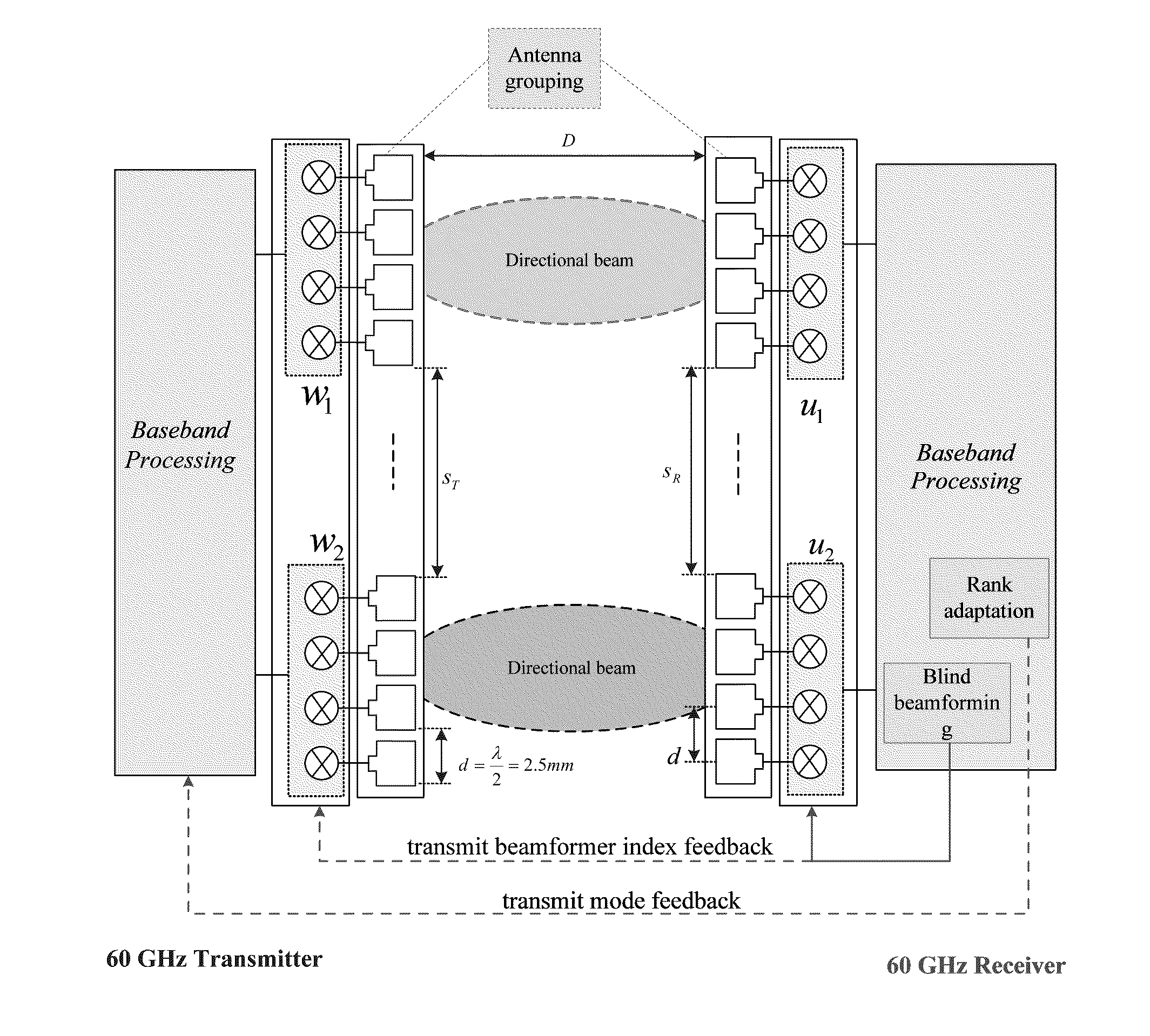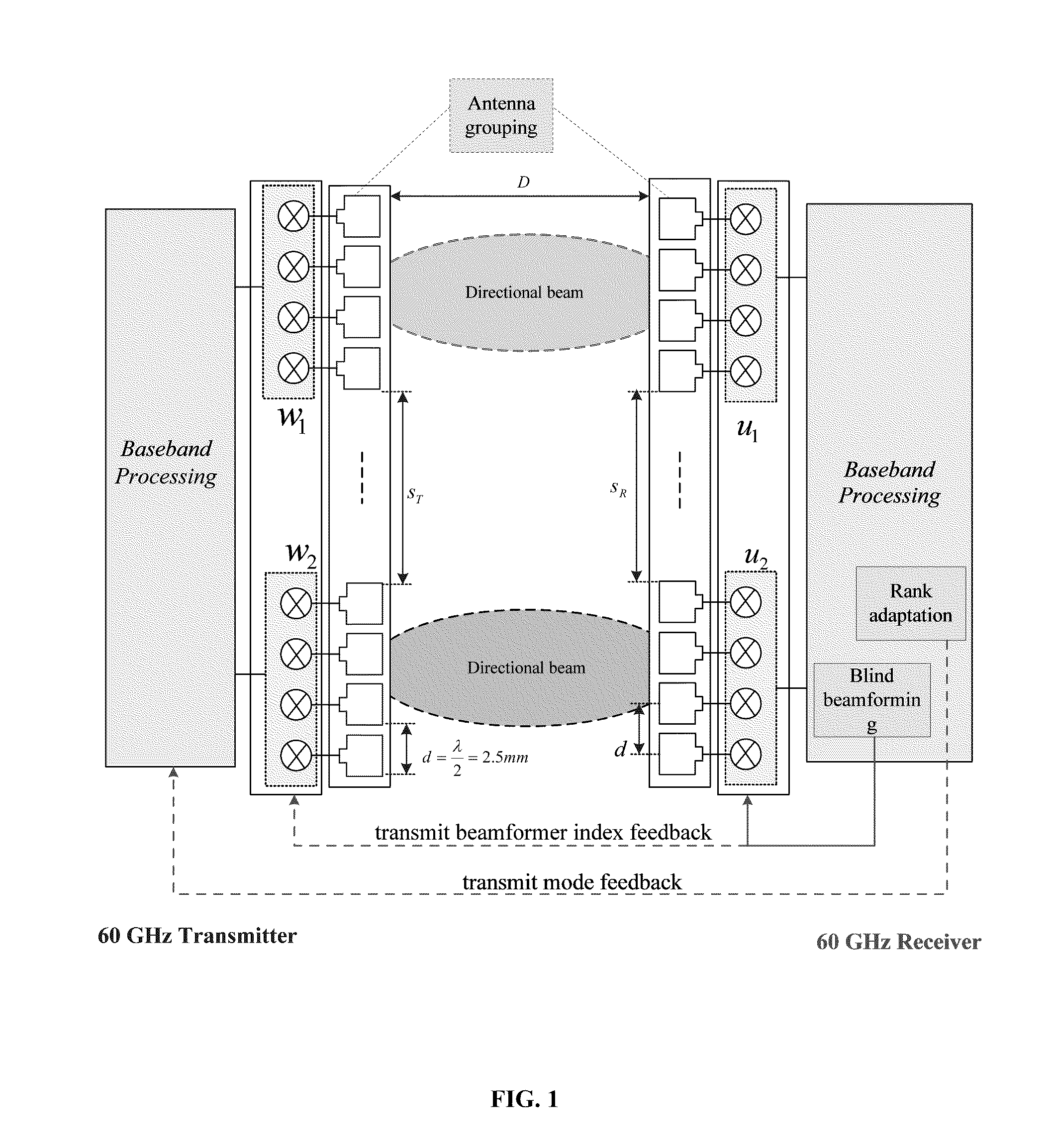MIMO Transmission with Rank Adaptation for Multi-Gigabit 60 GHz Wireless
a multi-gigabit 60 ghz wireless and rank adaptation technology, applied in the field of wireless communication, can solve the problems of inability to dynamically adjust the antenna spacing, the inability to achieve the effect of 60 ghz system assumption, and the inability to achieve the effect of reducing complexity, improving signal-to-noise ratio, and improving accuracy
- Summary
- Abstract
- Description
- Claims
- Application Information
AI Technical Summary
Benefits of technology
Problems solved by technology
Method used
Image
Examples
Embodiment Construction
[0015]The invention is directed to MIMO transmission with rank adaptation in the 60 GHz wireless radio link, which can leverage both high rank MIMO spatial multiplexing gain and rank−1 beamforming advantage to dramatically increase system throughput.
[0016]The invention is based on geometrical approach, entailing a system architecture (see FIG. 1) with antenna grouping and rank adaptation capability for 60 GHz transmission. Specifically, the transmit and receive (Tx-Rx) antenna arrays, W1 . . . W2, U1 . . . U2, linked by directional beams are grouped into a number (M) of subarrays with a predetermined subarray separation. The minimum number of transmission Tx and receiver Rx subarrays determines the highest rank that the MIMO channel can support. Each subarray consists of a traditional half-wavelength spaced d linear array. This architecture potentially releases the rank deficient 60 GHz LoS channel to a less correlated channel and provides high rank MIMO transmission and rank adapta...
PUM
 Login to View More
Login to View More Abstract
Description
Claims
Application Information
 Login to View More
Login to View More - R&D
- Intellectual Property
- Life Sciences
- Materials
- Tech Scout
- Unparalleled Data Quality
- Higher Quality Content
- 60% Fewer Hallucinations
Browse by: Latest US Patents, China's latest patents, Technical Efficacy Thesaurus, Application Domain, Technology Topic, Popular Technical Reports.
© 2025 PatSnap. All rights reserved.Legal|Privacy policy|Modern Slavery Act Transparency Statement|Sitemap|About US| Contact US: help@patsnap.com



